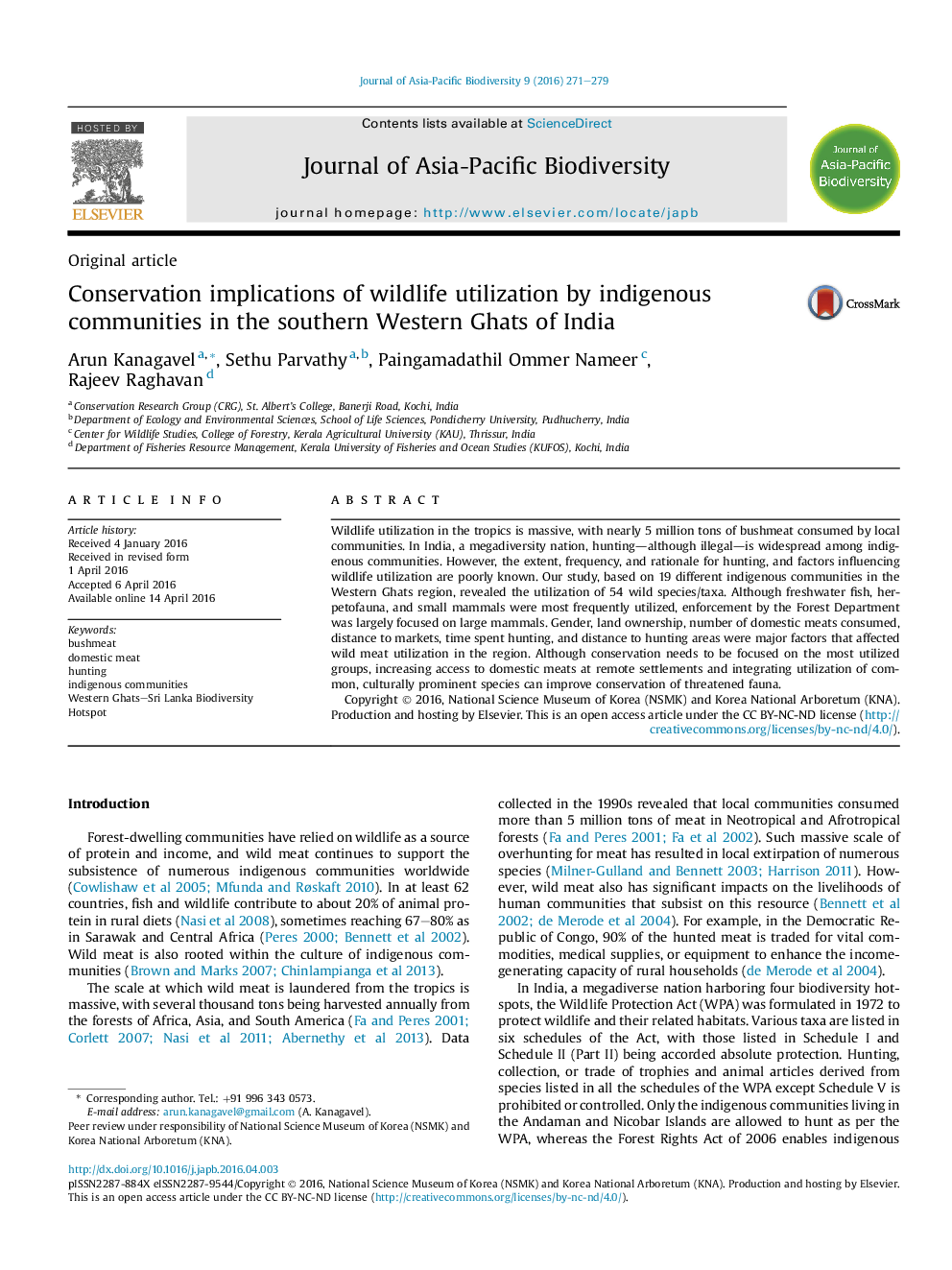| Article ID | Journal | Published Year | Pages | File Type |
|---|---|---|---|---|
| 4394922 | Journal of Asia-Pacific Biodiversity | 2016 | 9 Pages |
Wildlife utilization in the tropics is massive, with nearly 5 million tons of bushmeat consumed by local communities. In India, a megadiversity nation, hunting—although illegal—is widespread among indigenous communities. However, the extent, frequency, and rationale for hunting, and factors influencing wildlife utilization are poorly known. Our study, based on 19 different indigenous communities in the Western Ghats region, revealed the utilization of 54 wild species/taxa. Although freshwater fish, herpetofauna, and small mammals were most frequently utilized, enforcement by the Forest Department was largely focused on large mammals. Gender, land ownership, number of domestic meats consumed, distance to markets, time spent hunting, and distance to hunting areas were major factors that affected wild meat utilization in the region. Although conservation needs to be focused on the most utilized groups, increasing access to domestic meats at remote settlements and integrating utilization of common, culturally prominent species can improve conservation of threatened fauna.
